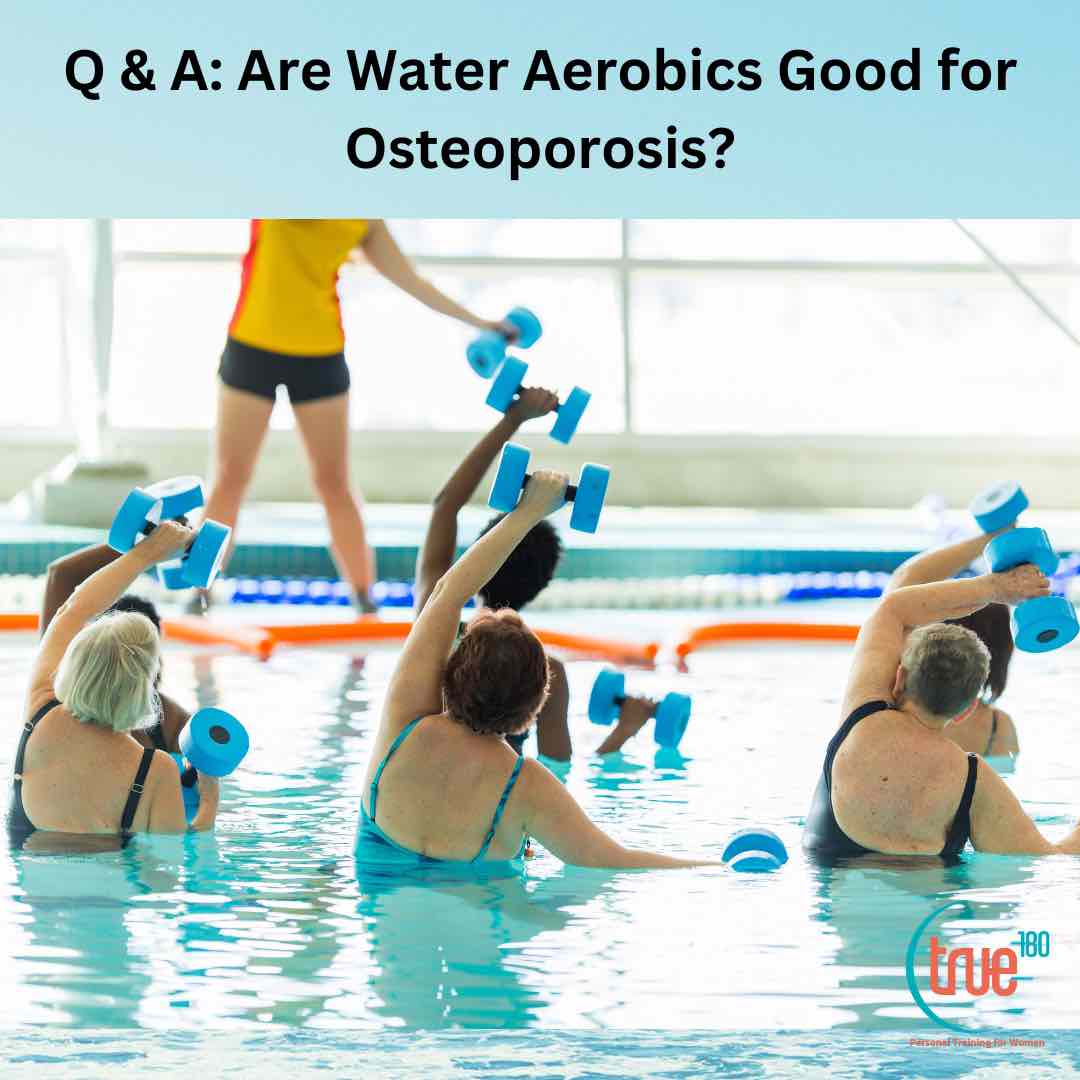We were recently asked – – -> Q & A: Are water aerobics good for osteoporosis?

A: If by “good for” you mean “will help improve bone density,” the answer is no. The why is very simple and straightforward:
· Our skeletons respond to stress or lack thereof.
o Skeletons that receive regular and substantial loading/stress get stronger and denser, or, at least, maintain.
o Skeletons that are coddled (deprived of high loads and impact) get softer and weaker.
o This property of our bones is part of Wolff’s Law that was first published in 1870.
· Being in water is as close to weightless as you can get on planet earth… in other words, exercise in water is the lowest impact exercise possible.
o So the claims that water aerobics are low impact is true.
o The fact that water aerobics are low impact, has no bearing on if low impact exercise will help your bone density. Low impact exercise can stimulate your muscles and heart, but not your bones.
Bones Need to Be Smushed
How does your body know where to add and subtract bone mass/density? It knows because of the electrical charges left by damage to your skeleton. The technical term would be “deformation,” but that is a fancy way of saying that enough stress has been placed on that part of your skeleton that it changes shape.
The little machines that take up old bone and lay down new bone (if there is a need for new bone) are called osteoclasts and osteoblasts. They do their jobs based on the presence or absence of electrical charges left on your bones. If you want your body to strengthen your bones, then you need to supply your bones with stress and impact.
Comfort Now Costs You Later
Women with osteoporosis or osteopenia are often encouraged to focus on zero impact activities like water aerobics or cycling. If you consider that removing impact and stress from a skeleton signal it to get weaker (more osteoporosis), then this advice seems backwards. If you take the shallow and short view then avoiding impact appears to be the lowest risk option.
Quick aside: risk can not ever be eliminated. Risks can only be traded for other available risks*. For example: If you want to avoid being in a 2 car collision you can completely eliminate this risk by cycling instead of driving. You might get hit by a car (which hurts!), but you will never be in a 2 car collision. You have traded the risk of car on car collision for the risk of bike on car collision.
Avoiding the activities that stimulate your bones virtually eliminates your risk of pain and discomfort now, but this comes at the cost of the skeleton of your future.
*Available risks are just what they sound like – things that exist vs. idealized wishes. It would be great if there was an option that had zero risk of osteoporosis and zero risk of soreness or aches, but that’s not so much an option as a fantasy.
Bottom Line
Load your body. We aren’t machines like cars where our parts wear out and need replacing. Our bodies self repair, and do an amazing job of it. (Amazing is not the same as comfortable.) Think about the process of strength training. You regularly exhaust and damage your muscles and the surrounding tissues, and in response, the body makes them stronger. This “recovery” process is the same as the healing process that takes place after you cut your hand.
Think about muscles that aren’t stressed and damaged (someone who doesn’t exercise for a decade). They shrivel, stiffen, become insulin resistant, become infiltrated with fat, and more. This person has zero risk of muscle soreness or aches and pains related to exercise, but they’ve traded this for diabetes, high blood pressure, erectile dysfunction, and more.
PS- It’s never too late to start strength training! We work with women of all ages and stages of fitness.

